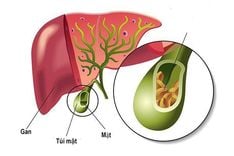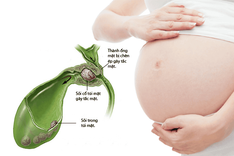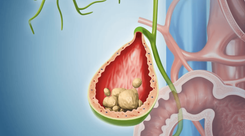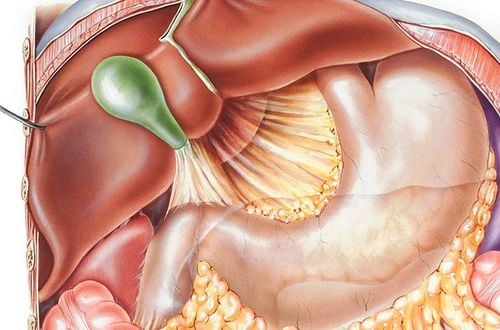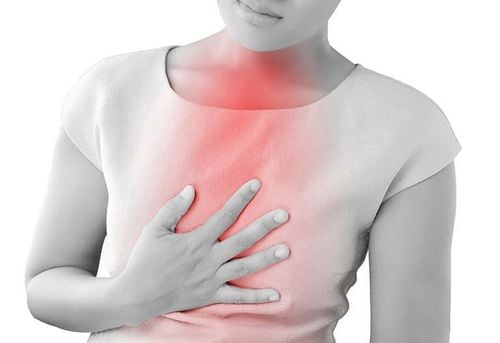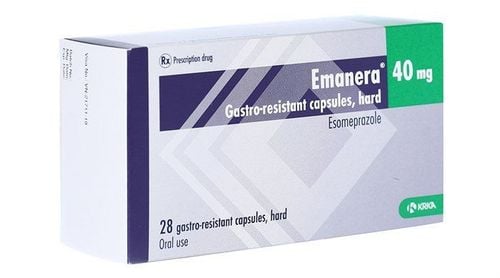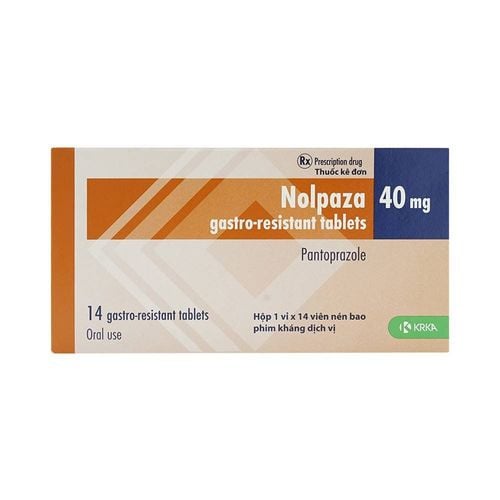Grade A reflux esophagitis can impair quality of life by causing discomfort and pain. To reduce symptoms, change lifestyle and nutrition, as well as follow the advice of a specialist.
Gastroenterologists from the Endoscopy Department of Examination and Internal Medicine at Vinmec Central Park International General Hospital provided professional consultation on the topic.
1. What is gastroesophageal reflux?
Gastroesophageal reflux disease occurs when gastric acid and bile come back into the esophagus. When reflux happens more than twice per week, the patient is diagnosed with gastroesophageal reflux disease.
This disease is graded as:
- Grade 0: During endoscopy, no visible inflammation is seen on the esophageal mucosa. Gastroesophageal reflux has not significantly impacted the esophagus.
- Grade A: The esophageal mucosa is inflamed, with erosions and ulcers smaller than 5 mm long.
- Grade B: The esophageal mucosa exhibits erosions and ulcers greater than 5 mm that are dispersed. Patients may experience pain when eating and choking due to esophageal stricture.
- Grade C: Esophageal erosions from grade B are grouped together, resulting in an increase in size and esophageal dysplasia (Barrett). This stage is known as Barrett's esophagus, or precancerous esophagus.
- Grade D: If Barrett is progressing severely. Barrett's esophagus can proceed to deep ulcers that cover more than 75% of the esophageal circumference if untreated.
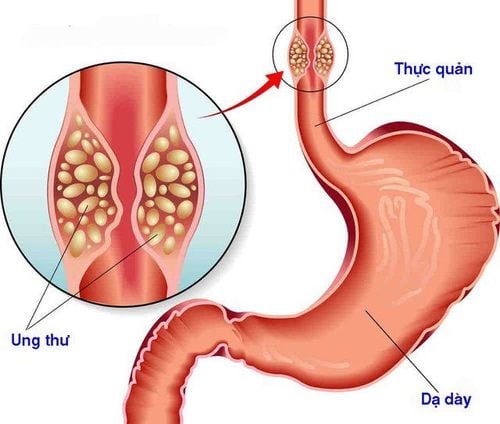
2. What is Grade A reflux esophagitis?
Gastroesophageal reflux occurs when the diaphragm and lower esophageal sphincter weaken, allowing stomach acid to come back into the esophagus. This fluid irritates and eventually destroys the esophageal mucosa.
In grade A gastroesophageal reflux, the esophageal mucosa is mildly injured, although there are still scratches and inflammation. The image from endoscopy demonstrates that the erosion on the esophageal mucosa is no longer than 5 mm. At this stage, the treatment is quite simple, involving only taking medication as directed on the prescription and making dietary changes.
However, the recurrence rate of grade A reflux esophagitis is high. So it is important to prevent complications. If it occurs several times, the patient is at risk of developing additional serious conditions such as Barrett's esophagus, esophageal stricture, and esophageal cancer.
3. Causes of the Disease
The common causes of GERD:
- Hiatal hernias
- Obesity and overweight.
- Smoking or being exposed to secondhand smoke.
Other causes of grade A reflux esophagitis include:
- Food allergies cause eosinophilia.
- Side effects of pain relievers and anti-inflammatory medications.
- Bile reflux.
Additionally, the risk factors that contribute to gastroesophageal reflux esophagitis include:
- Diet includes high-fat meals, alcohol, and sour foods.
- Lack of activity. Example: Lying down just after eating.
- Rapid weight gain.
- Pregnancy. Particularly in the latter stages, abdominal pressure rises throughout pregnancy.
- Diseases include gastroparesis and scleroderma.
- Unhealthy diet.
- An unhealthy lifestyle, lack of exercise, and bad habits all have impacts on the digestive tract.
4. Symptoms
The common symptoms include:
- Belching, heartburn: Belching occurs after eating a large meal or when hungry. When the stomach generates too much acid, it can lead to acid-like bad breath and heartburn.
- Nausea and vomiting: Nausea is uncommon, although food or substances in the vomit might produce nausea.
- Excessive salivation: Grade A gastroesophageal reflux leads the salivary glands to release more saliva than usual in order to neutralize the acid that has damaged the esophagus mucosa.
- Burning sensation in the epigastric region: Ulcers injure the esophageal mucosa, causing dull pain and burning.
- Dysphagia, bitter taste in mouth, and choking: Acid and gastric juice irritate the esophageal mucosa, causing it to scrape, erode, and create erosions and ulcers, resulting in dysphagia and pain. In the case of bile reflux, the patient has a bitter taste in their mouth.
- Cough and sore throat: Gastric juice refluxes into the respiratory system, resulting in cough, sore throat, and hoarseness.

When experiencing the symptoms listed above, the patient should visit a professional medical center for diagnosis and treatment.
5. Is grade A reflux esophagitis dangerous?
Grade A gastroesophageal reflux disease is not a dangerous disease because the inflammation is minor. If diagnosed early, the disease can be totally treated.
However, if the patient does not follow the treatment process, the disease might worsen. When the disease becomes severe, treatment will be difficult, and there is a chance of serious complications.
Complications of the disease include:
- Esophageal ulcers: If not treated promptly, esophageal mucosal inflammation can progress rapidly, resulting in ulcers and other serious symptoms.
- Barrett’s esophagus: Long-term reflux of gastric juice into the esophagus can result in Barrett's esophagus. Barrett's esophagus puts approximately 5% of patients at risk of developing esophageal cancer.
- Esophageal cancer can affect anyone, particularly those over the age of 50.
6. Individuals who are vulnerable
High-risk groups for developing grade A esophagitis include:
- Smoker
- Pregnant
- Overweight and obese
7. Treatment
At grade A, GERD can be cured fully if the person follows the treatment plan. Treatment approaches may incorporate both Eastern and Western medicine. However, Western medicine plays the main role in reducing the chance of recurrence.
7.1 Using Western medicine
The purpose of medicine is to anti-inflammatory and lower stomach acid secretion. Patients may be administered a variety of medicines, including
- Gastric acid neutralizers.
- Proton pump inhibitors.
- Drugs that support intestinal motility
The specialist prescribes the appropriate medications and dosages. Patients should follow the prescription. Do not change the type of medication, dose, timing of usage because this produces the outcomes you want or may even result in adverse effects.

Because medications have the potential to induce adverse effects, patients should visit their doctor as soon as they notice any unusual symptoms.
7.2 Daily Care and Activities
- Regular check-ups are required to exactly identify the stage and establish an effective treatment plan.
- Do not use medications without a doctor's prescription, as the side effects can harm the stomach and esophagus.
- Maintaining a positive attitude and reducing stress are other crucial aspects of the treatment process.
- Changing your diet to include more stomach-friendly foods such as yogurt, green vegetables, fruits, cereals, and white meat. And minimizing your intake of irritating meals such as fast food, spicy foods, sour foods, and foods high in spices and fat.
- Eliminate behaviors including eating hastily, not chewing fully, eating too much, eating while lying down.
- Maintain an ideal weight, avoid becoming overweight or obese.
- Get more moderate activities like yoga, walking, cycling, and swimming
- Adjust your sleeping position to lessen symptoms.

8. Prevention
To prevent grade A reflux esophagitis, it is critical to maintain a scientific lifestyle, which includes healthy food.
Developing a healthy lifestyle will help people manage their health more efficiently. This is a simple way to improve your health and avoid all diseases, including grade A reflux esophagitis.
To prevent grade A reflux esophagitis, take the following ways:
- Maintain a balanced diet
- Avoid abusing alcohol and tobacco.
- Limit your usage of antibiotics and over-the-counter pain medications without a doctor's prescription.
- Exercise regularly to improve your overall health.
- Avoid allergenic foods.
9. Diet for those with grade A gastroesophageal reflux
There is no special diet for those who have grade A reflux esophagitis. Patients must follow a scientific diet that includes nutrients such as carbohydrates, protein, and healthy fats.
When establish a healthy diet for patients with grade A reflux esophagitis, the following notes apply:
- Include all essential nutrients in your diet.
- To ensure quality, choose fresh, self-processed foods.
- Limit the usage of cooking oil and avoid high-fat dishes.
In addition, it is necessary to supplement vitamins and minerals from vegetables and fruits. A long-term scientific diet will improve the overall health and function of the digestive system.
Grade A gastroesophageal reflux disease is not a major issue if identified and treated. But patients must strictly adhere to the treatment plan and should not change treatment methods without doctor’s guidance.
To arrange an appointment, please call HOTLINE or make your reservation directly HERE. You may also download the MyVinmec app to schedule appointments faster and manage your reservations more conveniently.
